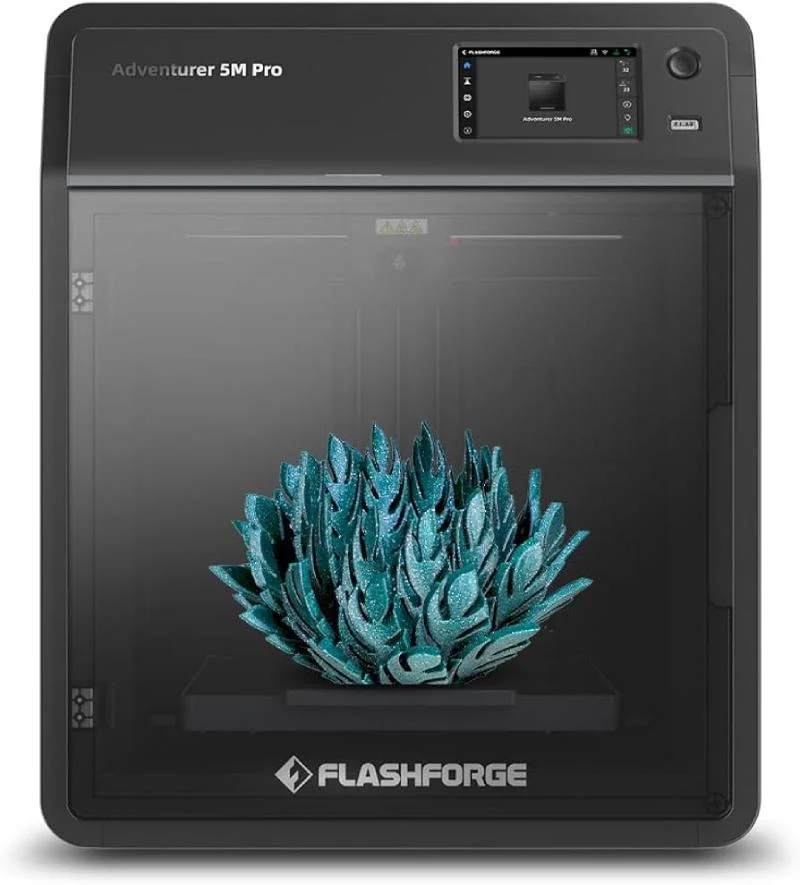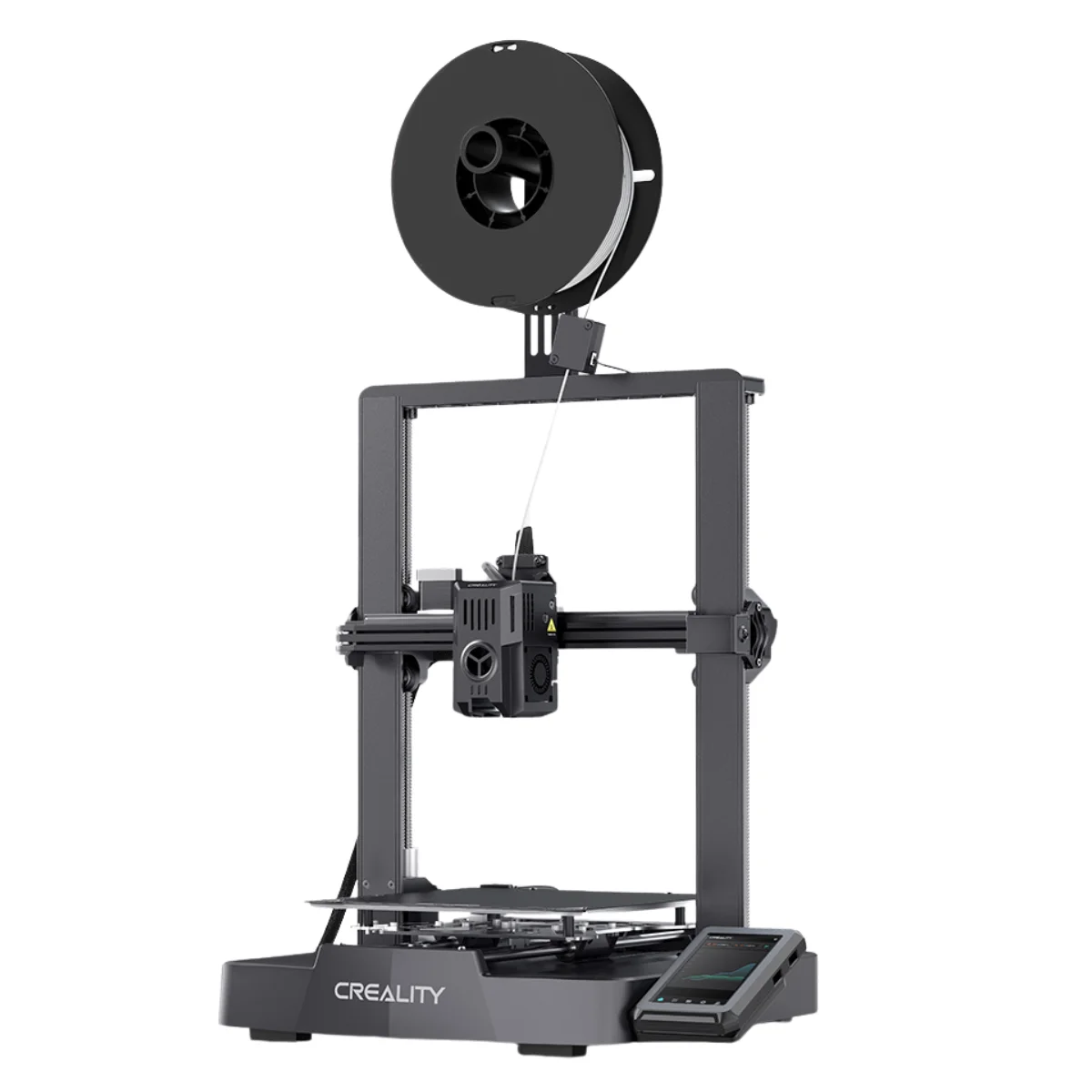Compare Adventurer 5M PRO vs Ender 3 V3 KE
Comparison between the best 3D printers
Choose the best 3D printer at the best price. The cheapest 3D printers are here.
Buy a 3D printer here with 3D Fila.
 |
 |
|
| Model | Adventurer 5M PRO |
Ender 3 V3 KE[BUY Ender 3 V3 KE] |
| Printing Material | Filament | Filament |
| Buy Filament for Flashforge Adventurer 5M PRO | Buy Filament forCreality Ender 3 V3 KE | |
| Estimated price | $599,00 | $279,00 |
| Manufacturer | Flashforge | Creality |
| Release Year | 2023 | 2023 |
| Print Volume [mm] | 220x220x220 | 220x220x240 |
| Printer Size [mm] | 380x400x453 | 433x366x490 |
| Weight [kg] | 10,8 | 7,8 |
| Power Loss Recovery | YES | YES |
| Enclosed printer | YES | NO |
| Bed Leveling | Automatic | Automatic |
| Filament End Sensor | YES | YES |
| Bed type | Heated | Heated |
| Power supply system | Direct Drive | Direct Drive |
| Standard nozzle | 0,4 | 0,4 |
| Maximum Nozzle Temperature [°C] | 280 | 300 |
| Maximum Bed Temperature [°C] | 110 | 100 |
| Maximum printing speed [mm/s] | 600 | 500 |
| Filament holder | YES | YES |
| Camera for supervision | NO | NO |
| Recommended filaments | PLA, PETG, TPU, PLA-CF, PETG-CF | PLA, PETG e TPU (95A+), ASA |
| Recommended slicers | FlashPrint 5 | Creality Print, Cura 5.0 ou superior, Prusa Slicer, Orca |
| Maximum Resolution [mm] | 0,1 | 0,1 |
| Processor | 32-bit Silenciosa | |
| Display | Touchscreen 4,3'' | Touchscreen 4,3'' |
| Power Supply | 350 W | 350 W |
| Connectivity | Wifi / Ethernet / USB | USB drive, LAN, Creality Cloud APP |
| Operating systems | Windows, Linux, Macbook | Windows, Linux, Macbook |
| Date of registration in the system | 2024-07-09 | 2024-03-06 |
| Release date | 2023 | 2023 |
| Extra features | The Flashforge Adventurer 5M PRO features advanced features such as a CoreXY motion system, direct drive extruder, print speeds of up to 600mm/s and maximum acceleration of 20,000mm/s². It features fast nozzle changes, automatic calibration, active vibration compensation, camera monitoring, time-lapse video, HEPA and carbon filters for particles and VOCs, and an intuitive 4.3-inch touchscreen interface. Ideal for printing materials such as PLA, PETG, ABS and TPU. | The Ender 3 V3 KE, an advancement in the Ender line, achieves print speeds of up to 500mm/s with its touchscreen and WiFi connectivity. Although it has a slightly smaller print area than the SE model, it makes up for it with superior print quality. Its robust design, high-quality components, and intuitive wireless control are appreciated, although Creality's mobile app lacks practicality and does not have a closed system. It stands out for its linear track on the X-axis for stability at high speeds and the hotend that supports up to 300°C, ideal for high-temperature filaments. |
| Support for multiple colors and materials (AMS and CFS) | NO | NO |
Notes * |
||
| Cost-benefit | 7 / 10 | 7 / 10 |
| Hardware | 4 / 10 | 3.2 / 10 |
| Tela | . | . |
| Print volume | 3 / 10 | 3 / 10 |
| Performance | 5 / 10 | 4 / 10 |
| [BUY Ender 3 V3 KE] |
Conclusion |
| In conclusion, both the Adventurer 5M PRO and the Ender 3 V3 KE present solid options for 3D printing, catering to different user needs and preferences. The Adventurer 5M PRO, priced higher, offers advanced features such as a CoreXY motion system, faster print speeds, and an enclosed design, making it suitable for users focused on performance and quality with varied materials like PLA, PETG, and TPU. It also excels in user-friendly features like automatic calibration and a touchscreen interface. On the other hand, the Ender 3 V3 KE offers a more budget-friendly option without sacrificing print quality, making it ideal for hobbyists or those new to 3D printing. While it has a slightly smaller build volume and lacks an enclosed design, it still has commendable features like solid construction, good stability, and compatibility with high-temperature materials. Both printers have comparable cost-benefit ratings, but the Adventurer 5M PRO outshines in performance and hardware capabilities, whereas the Ender 3 V3 KE remains a practical choice for those seeking a reliable yet economical 3D printing solution. Ultimately, the best choice depends on the user's specific needs, whether prioritizing advanced functionalities or cost-effectiveness. |

